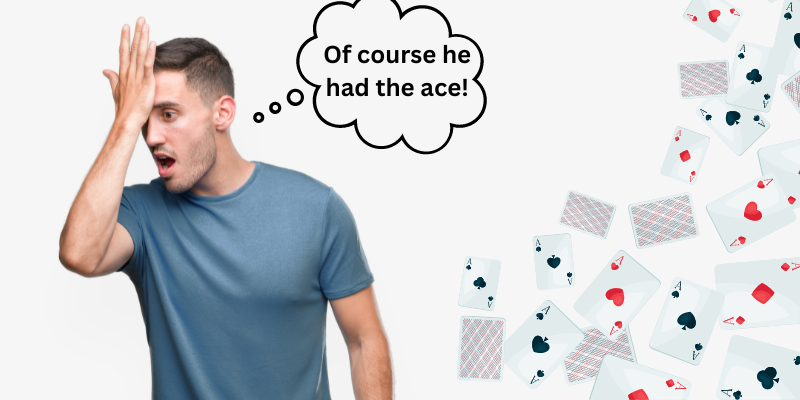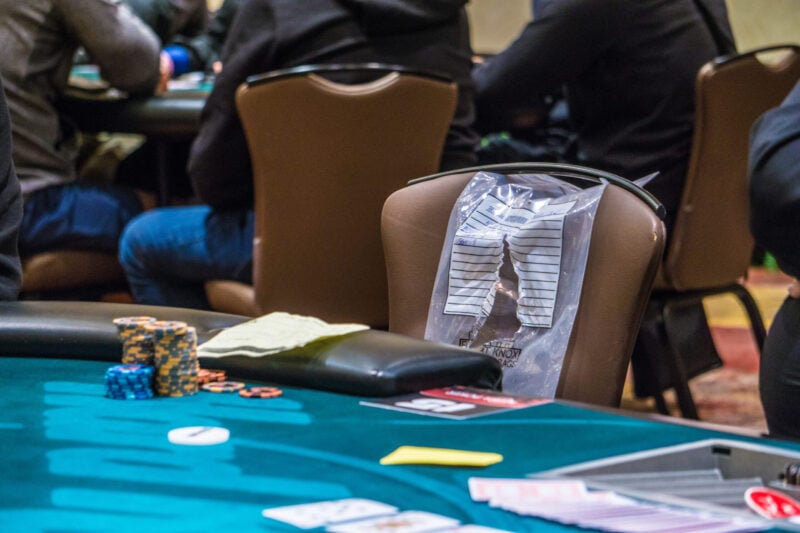We covered a lot of ground in the first two articles of the series. If it seems like implementing these strategies in every hand you play might be too much, I can help with that too. Because there is one thing that ties all these strategies together – thinking all the way through the hand and having a plan.

Most players, even some good ones, make plays and hope they work. When you see a player get reraised and think for a long time, they didn’t have a plan. And you see it all the time. They made a play and hoped that it would work, but they didn’t have a plan for what to do if it didn’t work.
This might be a big change for you. It will be for the vast majority of poker players. Most players make whatever they think is the best play and hope that things go the way they want them. But hoping and wishing don’t make you any money. It’s time to stop doing those things completely, just quit now, and start having a plan for everything that might happen in the hand. You’ll be shocked at how much better your results are from this simple change, and it will definitely make you harder for the pros to abuse.
Always planning a hand out, and considering every possible response from your opponent, will help you implement the things we talked about in the first two articles in a number of ways.
It keeps us out of trouble
Planning out the hand will not just help you choose the best play for now, it will help you avoid pitfalls no matter how far down the line they might be. If you are planning to raise a flop bet and you only have a flush draw, how will you respond if your opponent goes all-in over the top? What will you do on the turn if they call and you miss your flush?
This kind of thinking ahead might cause you to simply call a bet when you are out of position with your flush draw, knowing that you will usually have a tough choice to make on the turn with your missed flush and that if you check your opponent will usually know that you missed your flush draw and they can bet big and make your life hard.
It helps to put yourself in your opponent’s shoes when you are considering your options. What are their options? What options would you consider if you were in their seat? Now how can you play that makes it easier to respond to each of their options?
This approach also helps defeat an opponent who may be trapping you, expecting you to make a play that they can exploit. Such is the case with the preflop raiser from early position who checks a king-high flop. Why are they checking? They might have queens and be timid, but most of the time they have a set of kings, two aces, or ace-king, and they want to check-raise you. You can foil this by checking behind instead of taking the bait. And you can plan to raise any very scary turn card, or simply hope to hit a miracle on the turn.
This play works especially well if you have any hope of winning the hand. If you have absolutely nothing, it may be correct to bet, but if you have even an inside straight draw or a small pair that could turn a set, then you must check and ruin their plan to raise you off your hand. On the rare occasion that you turn a monster and bust them, you’ll be glad you thought ahead and didn’t fall into their trap.
Planning ahead also keeps you out of trouble by giving you some control over the size of the pot. If you act with a wing and prayer, you may end up in a pot that is too big for your hand, or miss a chance to build a really big pot with your monster hand.
It requires us to think about our own range
Putting yourself in your opponent’s shoes and planning out the hand requires you to think about what they think. What range do they think you have? How will they respond to different plays you make starting with that assumption?
This approach keeps you thinking about your own range and how to play big chunks of it in similar ways so that you don’t give away information. Just another skill we talked about in the first two articles that is much easier to do when you have a plan.
Each time you consider one of your options, think about whether you could play other parts of your range this way as well, or if you would only make a specific play with this hand and are giving away too much information.
This mistake is very common among recreational players. They are often shocked to see a pro fold a fairly big hand, when the pro considered it a trivial fold given how the hand played out. This is usually because their opponent played in a way that clearly indicated the strength of their hand.

Thinking the hand through allows us to catch mistakes BEFORE we make them
There are so many plays that become automatic, that it’s easy to make them in the wrong spot. If you have thought through the hand and know how to respond to each of your opponent’s likely plays, you will be less likely to make that play on autopilot that would get you in trouble.
The example from the second article of making a continuation bet against the big blind on a board of all small cards serves us well here too. They know that you probably missed that flop, and may not be able to hold on to an over pair if the board gets scary. If you think through the hand you will start by asking yourself how you will handle a check-raise.
If you can’t stand the heat of a check-raise and a big turn bet, then you should skip that automatic continuation bet and see how the turn looks. If you actually flopped a set of sevens, then you may want to bet and let the pro raise you. Now when they make a big bet on the turn you may stack them. If you check the set of sevens, and raise the turn when they bet, you will often scare them off.
Looking ahead can prevent mistakes on later streets even better than the early streets. Think about stack sizes and likely ranges for your opponent and decide if you really want to see the river, and how big you want the pot to be.
This approach can even help you avoid giving away information with physical tells. If you call instantly with a good draw, your opponent will often put you on exactly that draw. It’s rare to see someone call instantly with junk or with a monster hand. Even medium strength made hands usually have to think for a second, but a solid draw will call instantly sometimes. The pro usually won’t make this mistake, but you might.
If you are thinking through the hand, you might be considering a raise, or just making sure that a call is the correct play, but you are also making sure that you are never acting instantly in situations that are important.
It allow us to plan out our bet sizes to determine who gets to use the all-in hammer
That all-in hammer we talked about in the earlier articles is crucial, and setting up a hand where you get to use it, or handing it to your opponent when you have a monster and want them to use it, requires planning. There are few things more powerful in poker than using your bet sizes to make it impossible for your opponent to use the hammer.
If you have thirty big blinds in your stack on the flop, and there are ten big blinds in the pot, a big bet on the flop, say seven big blinds, will set your opponent up to use the hammer. But what if you bet four big blinds? It would be an awfully big overbet for them to go all-in for thirty big blinds with only fourteen big blinds in the pot.
In this situation, your opponent has a tough choice. If they raise, it will probably set you up to use the hammer, or commit them to calling an all-in if you shove, while not committing you to anything. If you had twenty big blinds in your stack, then any bet would allow them to use the hammer, so a check might be better. If you had forty big blinds, then a slightly larger bet might be acceptable.
This can work well on later streets too. If there are already thirty big blinds in the pot, and you and your opponent each have thirty big blinds in your stack, you have to consider the hammer and when you want it to be used. If you have a flush draw on the turn, your options are to use it now, or check behind if you are in position and make your decision on the river.
Now you may get your opponent to shove all-in on the river after you hit your flush, or you may get them to check to you after you miss your flush and be able to shove all-in when you think they probably can’t call. The stack size determines what your options are, and planning out your plays helps you decide on the best one.
Think about specifics
When you are thinking ahead, don’t just decide what you can do on later streets. Think about what you can do when specific cards fall on the next street. If the board is A45, and you think your opponent has a big ace, then you can call a lot of flop bets if the stacks are deep enough. Even with a hand as weak as 43, you have five outs to win, and you can also bluff if a 5, 6, 7, or 8 falls. This gives you twenty potential outs to win the hand as long as you have enough chips and plan it out so that you can put a lot of pressure on your opponent if a bluff card falls.
If you have a weak hand like QJ on a board of T83, your two over cards and an inside straight draw aren’t worth all that much. But if you think your opponent has an over pair, you might be able to bluff when an ace falls as well. Include that kind of thinking in your plan, and it will become second nature.
It has to be a habit
Planning the hand and considering all of your options, and their ramifications, can’t be something you think of on the spot. It has to become a habit. The middle of a poker hand is much the same as a fight or a rescue operation or any other stressful situation where you tend to do what you have practiced rather than thinking clearly in the heat of the moment. That’s why martial arts teachers say “You fight like you practice.”
So make it your new thing. Don’t worry about anything else for a month. Just go into each hand with the specific intent to think all the way through the hand and each possible series of actions. You may not get it right every time.
At first, you may not even get it right most of the time. You’ll miss important things and forget to consider some factor that could have won you the hand. But those will be learning experiences. All that matters now is that thinking ahead becomes second nature. Once you are doing it consistently, you’ll find that you get better at it very quickly.


